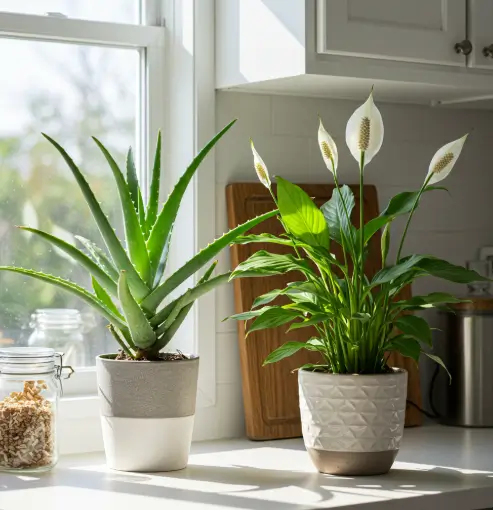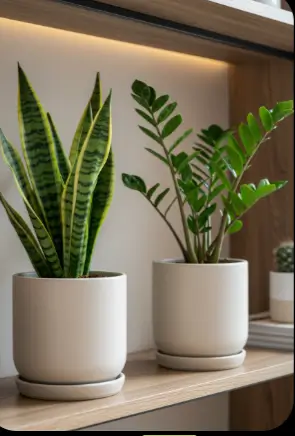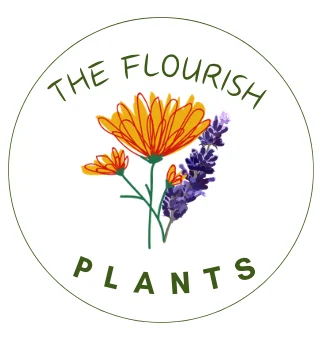Introduction
Growing up, I always admired my grandmother’s house. It was more than just a home—it was a lush green sanctuary. The air always smelled fresh, and every corner had a thriving plant, whether it was a tall fiddle-leaf fig in the living room or small pots of aloe vera by the windowsill. She used to say, “A home without plants is like a body without a soul.” I did not fully grasp what she meant until I got my apartment. The sterile, lifeless space needed warmth, and that is when I started my journey with indoor plants.
Table of Contents
Indoor plants are more than just decorative elements; they bring life, purify the air, and even boost mental health. Studies have shown that houseplants can reduce stress, improve mood, and increase productivity. But selecting the right plant depends on factors such as available light, humidity, and maintenance level. Certain plants do well in low-light environments, while others require bright, indirect light to flourish. Some are ideal for air purification, and others simply add beauty with their vibrant leaves or flowers.
In this article, I will guide you through the 24 best indoor plants that can transform your home into a healthier and more inviting space. Whether you are looking for low-maintenance indoor plants, air-purifying options, or statement pieces, this list has something for everyone.

Part 1: Low-Maintenance Indoor Plants
If you are a beginner or someone who frequently forgets to water plants, low-maintenance houseplants are the best choice. These plants are resilient, adaptable, and require minimal care.
1. Snake Plant (Sansevieria)
Description and Unique Features
The snake plant, also known as Sansevieria or Mother-in-Law’s Tongue, is famous for its upright, sword-like leaves with striking green patterns. It is nearly indestructible and can survive in a variety of conditions.
Care Requirements and Ideal Conditions
- Grows well in low light but can also handle bright, indirect sunlight.
- Requires minimal watering—only once every 2–3 weeks.
- Tolerates dry air, making it ideal for homes with central heating.
Benefits, Including Air Purification
- Removes toxins like benzene, formaldehyde, and carbon monoxide from the air.
- One of the best indoor plants for oxygen production, releasing oxygen even at night.
- Helps absorb moisture, reducing the risk of mold growth in humid environments.
2. ZZ Plant (Zamioculcas zamiifolia)
Characteristics and Visual Appeal
The ZZ plant is a stylish, modern houseplant with waxy, deep-green leaves. It brings a sense of elegance to any space.

Watering and Lighting Needs
- It can tolerate low to medium light and even artificial light.
- Requires watering only once every 2–3 weeks.
- Prefers dry soil and can survive neglect.
Suitability for Beginners
- It is one of the easiest plants to maintain and is ideal for those who tend to forget to water.
- Resistant to pests and diseases.
- Thrives in office settings and bedrooms.
3. Pothos (Epipremnum aureum)
Varieties and Leaf Patterns
- Comes in different varieties like Golden Pothos, Marble Queen, and Neon Pothos.
- Features heart-shaped leaves with trailing vines, making it perfect for hanging baskets.
Growth Habits and Propagation Tips
- Fast-growing and easy to propagate—just cut a vine and place it in water.
- It can grow several feet long, making it perfect for bookshelves and window sills.
Adaptability to Various Environments
- Tolerates low light and indirect sunlight.
- Grows well in water or soil, making it extremely versatile.
Part 2: Air-Purifying Indoor Plants
If you are looking for the best indoor plants for clean air, these options can help remove toxins and improve indoor air quality.
4. Peace Lily (Spathiphyllum)
Flowering Features and Aesthetic Appeal
- Produces elegant white flowers that bloom throughout the year.
- Its lush green leaves add a fresh, vibrant look to any indoor space.
Toxicity Considerations for Households with Pets
- While beautiful, peace lilies are toxic to pets, so keep them out of reach.
- They are also mildly toxic to humans if ingested.
5. Spider Plant (Chlorophytum comosum)
Appearance and Growth Patterns
- “Displays long, gracefully arching leaves with green and white striping.”
- Develops baby plants (spiderettes) that can be easily propagated.
Ease of Care and Propagation
- Low-maintenance and thrives in bright, indirect light.
- Requires watering once a week, making it an excellent plant for beginners.
Effectiveness in Removing Indoor Pollutants
- Removes pollutants like carbon monoxide, formaldehyde, and xylene.
- Helps increase humidity levels, improving respiratory health.
6. Aloe Vera
Succulent Nature and Medicinal Uses
- Known for its soothing gel, which can be used for burns and skincare.
- Features thick, fleshy leaves filled with healing aloe gel.
Sunlight and Watering Requirements
- Requires bright, indirect sunlight.
- Requires very little water—only when the soil has dried out completely.
Air Purification Capabilities
- Absorbs formaldehyde and benzene, improving indoor air quality.
Part 3: Indoor Plants for Low-Light Conditions
Not all homes have bright natural light. Here are the best indoor plants for low-light conditions.
7. Chinese Evergreen (Aglaonema)
- Thrives in low-light environments.
- Features: Colorful leaves with silver, red, or pink patterns.
- Needs very little watering, which makes it an excellent low-care option.
8. Cast Iron Plant (Aspidistra elatior)
- It can survive low light, neglect, and poor conditions.
- Has broad, dark green leaves, adding a tropical feel to interiors.
- Tolerates temperature fluctuations, making it ideal for any home.

9. Philodendron
- A trailing plant with heart-shaped leaves.
- Grows well in low to medium light.
- Perfect for bookshelves, hanging planters, and office desks.
FAQs on Indoor Plants
What plant removes 78% of airborne mold?
English Ivy is known for reducing airborne mold and improving air quality.
What are the best plants for inside the house?
Some of the best indoor plants include snake plants, pothos, peace lilies, and aloe vera.
Which plant gives oxygen 24 hours?
Areca Palm is one of the few plants that release oxygen day and night, improving indoor air quality.
What is the most popular houseplant in the world?
Monstera Deliciosa is globally recognized for its large, unique leaves and easy maintenance.
Conclusion
Indoor plants not only beautify your home but also provide health benefits, from air purification to stress reduction. Whether you are looking for low-maintenance plants, air-purifying options, or decorative statement pieces, there is a perfect plant for every space.
So, Why not introduce a touch of nature into your home? Start with one plant, watch it thrive, and soon, your home will become a green sanctuary just like my grandmother’s. 🌿
If you need more advice, check our guide ( click here )
